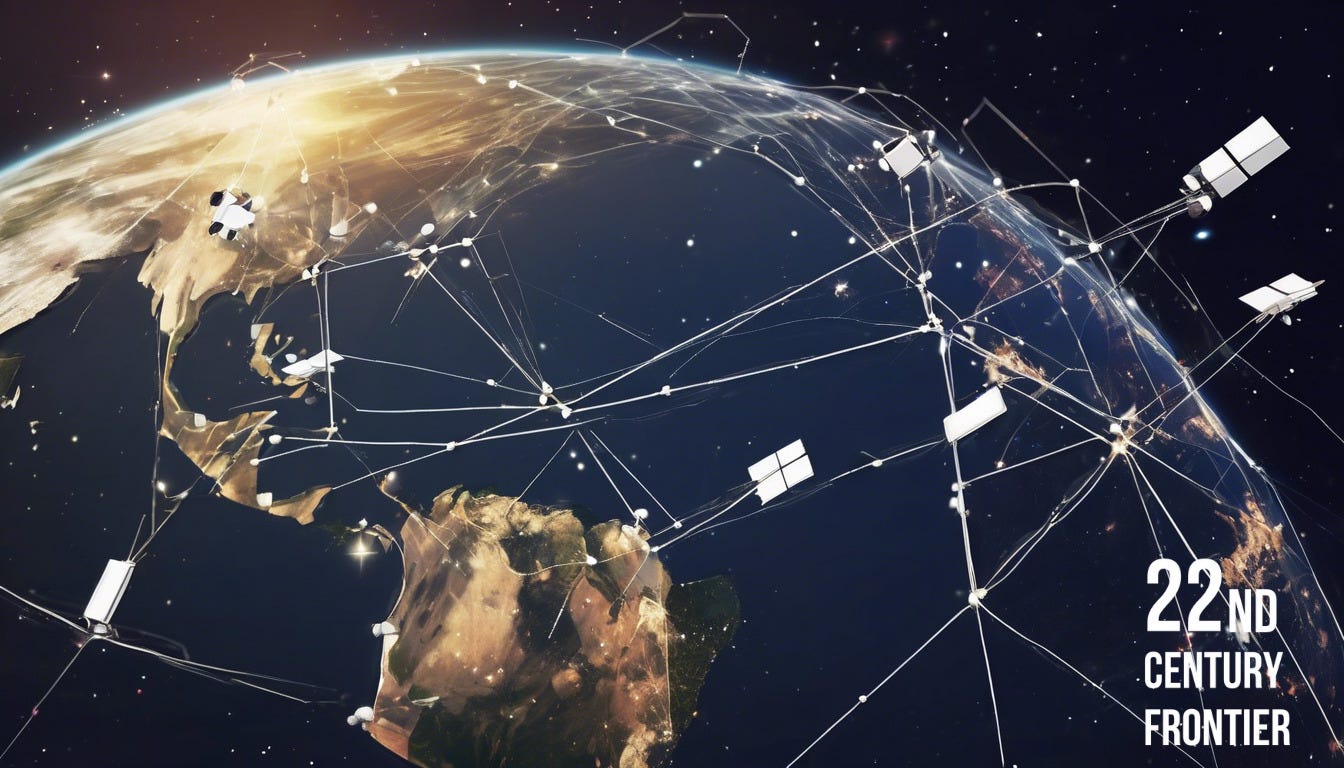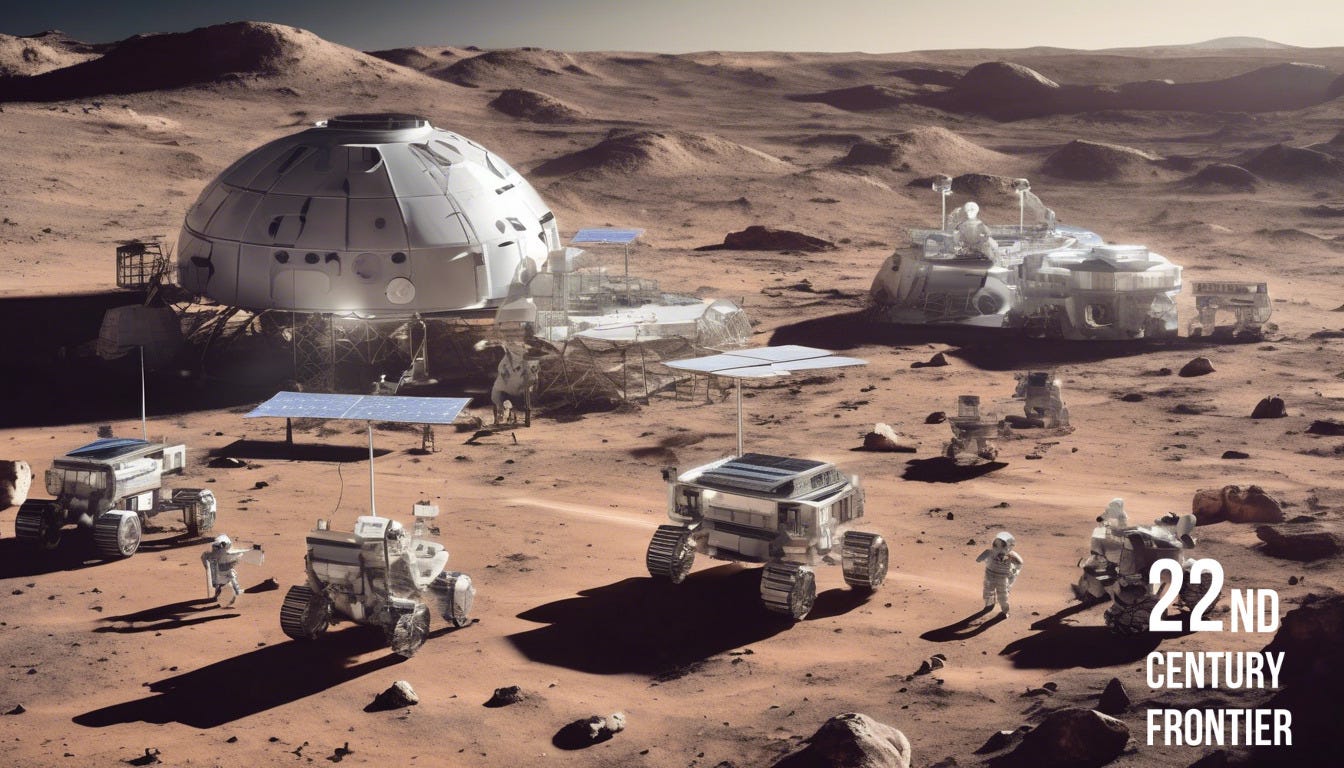SpaceTech Boom Ahead 🌌, $1.8 Trillion Economy by 2035 💰, The Race Back to the Moon 🌕
The Future of SpaceTech: Key Trends Shaping the Next Decade (2025-2035)
Welcome to 22nd Century Frontier — your strategic edge in innovation, investment, and entrepreneurship. 🚀
Key Takeaways
SpaceTech is set for major growth, with trends like private sector involvement, small satellites, and lunar exploration leading the way.
The space economy is expected to reach $1.8 trillion by 2035, driven by satellite services and Earth observation.
Surprising detail: Space tourism could be valued at $1.8-3.3 billion annually by 2035, making space travel more accessible.
Table of Contents
Overview
Economic Growth and Commercialization
Technological Advancements
Exploration and Colonization
Sustainability and Infrastructure
Earth-Centric Applications
Market and Industry Insights
Conclusion
1. Overview
The field of SpaceTech is poised for transformative growth over the next decade, from 2025 to 2035, driven by technological advancements, increased private sector involvement, and ambitious exploration goals. This article provides a comprehensive analysis of the trends shaping the industry, supported by insights from industry reports, space agency strategies, and market analyses. The following sections detail the key trends, their implications, and supporting evidence, ensuring a thorough understanding for stakeholders and enthusiasts alike.
2. Economic Growth and Commercialization
The space economy is projected to expand significantly, with estimates suggesting a value of $1.8 trillion by 2035, up from $630 billion in 2023, according to a report by the World Economic Forum and McKinsey & Company. This growth, expected to outpace global GDP, is driven by “backbone” applications like satellites and launchers, valued at $330 billion in 2023, and “reach” applications, at $300 billion, which include services benefiting industries such as transportation and retail. The annual growth rate for these segments is projected to be twice the global GDP growth rate over the next decade, highlighting the sector’s economic potential.
Commercialization is a major trend, with private companies increasingly dominating space activities. SpaceX, for instance, has launched over 2,000 Starlink satellites by 2024, providing internet services in over 100 countries, as noted in a Down to Earth article. Blue Origin and Virgin Galactic are advancing space tourism, with Blue Origin completing 28 commercial suborbital flights by November 2024 using its New Shepard vehicle. The space tourism market could be valued at $1.8-3.3 billion annually by 2035, according to Deloitte, a surprising detail given the current high costs and niche market, indicating potential for broader accessibility.
3. Technological Advancements
Several technological trends are set to redefine SpaceTech capabilities. Small satellites and constellations are a leading innovation, with the small satellite market expected to reach USD 260.56 billion by 2029, growing at a CAGR of 9.38%, as per StartUs Insights. These satellites, including CubeSats, are cost-effective for tasks like Earth monitoring and communication, with companies like Space Inventor developing modular designs for enhanced functionality.
Advanced communications are another critical area, with optical and laser communications promising 10 to 100 times better data rates than radio, as highlighted in NASA’s future technology page. The integration of 5G and beyond will provide reliable, low-latency connectivity, supported by Lockheed Martin’s work on AI-driven digital twins for Earth and space observation.
AI and machine learning are becoming integral, with over 80 space projects at Lockheed Martin utilizing AI for autonomous operations and situational awareness. NASA’s use of AI in Mars rovers for navigation and data analysis exemplifies this trend, enhancing mission efficiency and reducing human intervention.
4. Exploration and Colonization
Lunar exploration is a focal point, with NASA’s Artemis program aiming to land “the first woman and the next man” on the Moon and establish a sustainable presence by the decade’s end, as noted in ESI Motion’s analysis. This includes contracts for Lunar Terrain Vehicles and a potential Lunar Railroad Network, indicating a move towards infrastructure development. ESA’s Agenda 2025 also emphasizes lunar activities, aiming to increase European autonomy in space (Introducing ESA Agenda 2025).
Mars exploration continues with robotic missions like NASA’s Perseverance rover, with plans for human missions in the 2030s, supported by ESA’s ExoMars rover. These efforts are part of a broader strategy to expand humanity’s presence across the solar system, with international collaborations and private sector participation playing significant roles.
Planetary defense is another trend, with NASA’s DART mission testing asteroid deflection techniques, prioritizing efforts to mitigate hazardous asteroid impacts, as mentioned in the ESI Motion article.
5. Sustainability and Infrastructure
Keep reading with a 7-day free trial
Subscribe to 22nd Century Frontier® to keep reading this post and get 7 days of free access to the full post archives.






